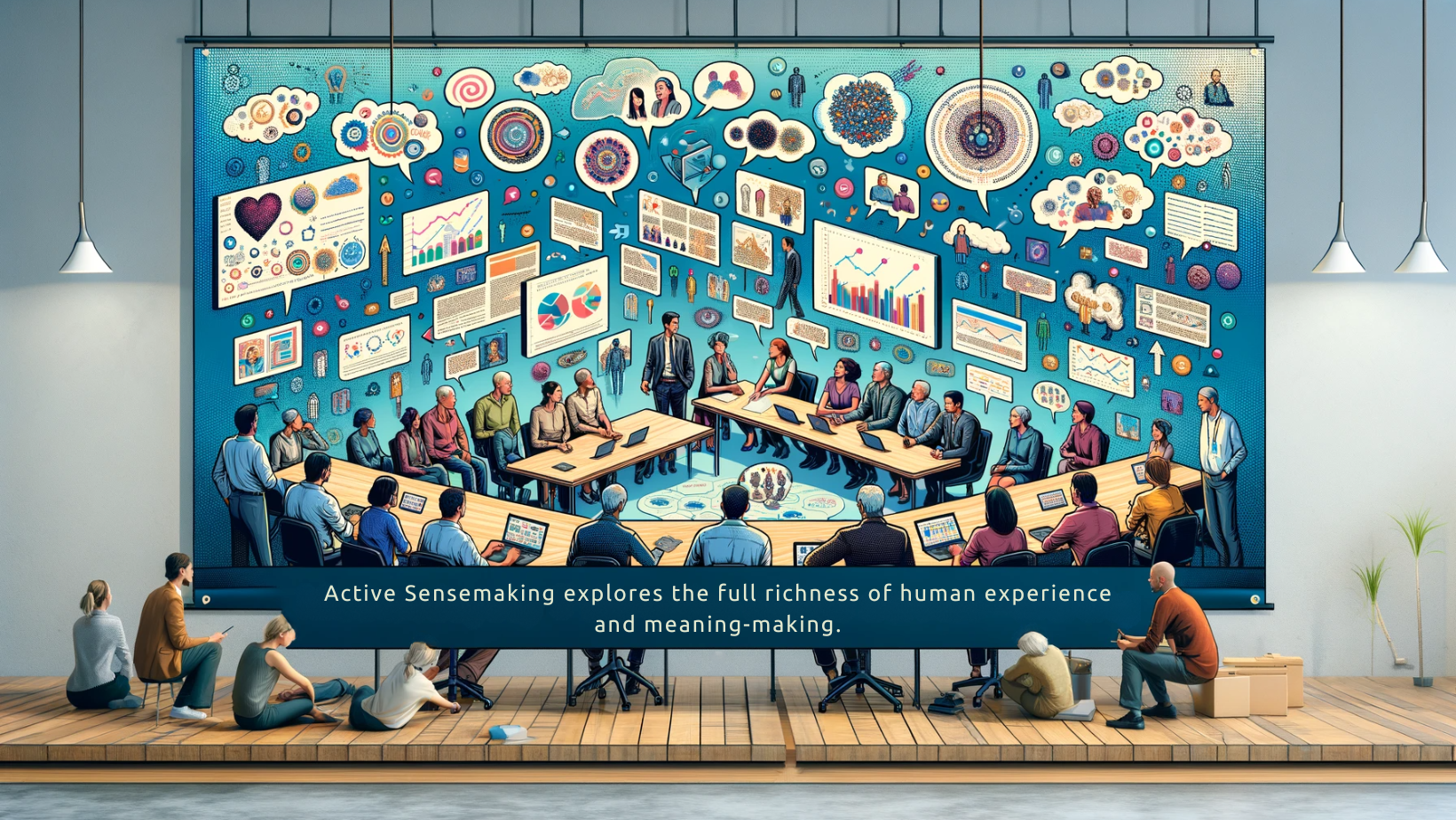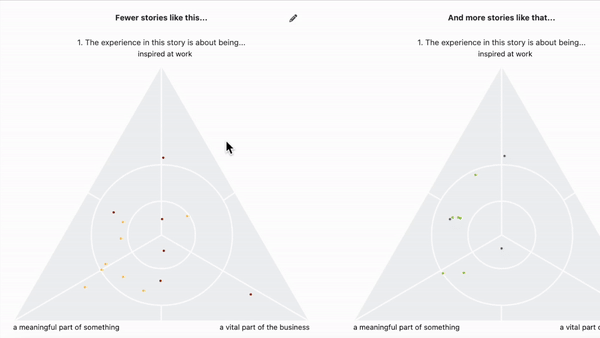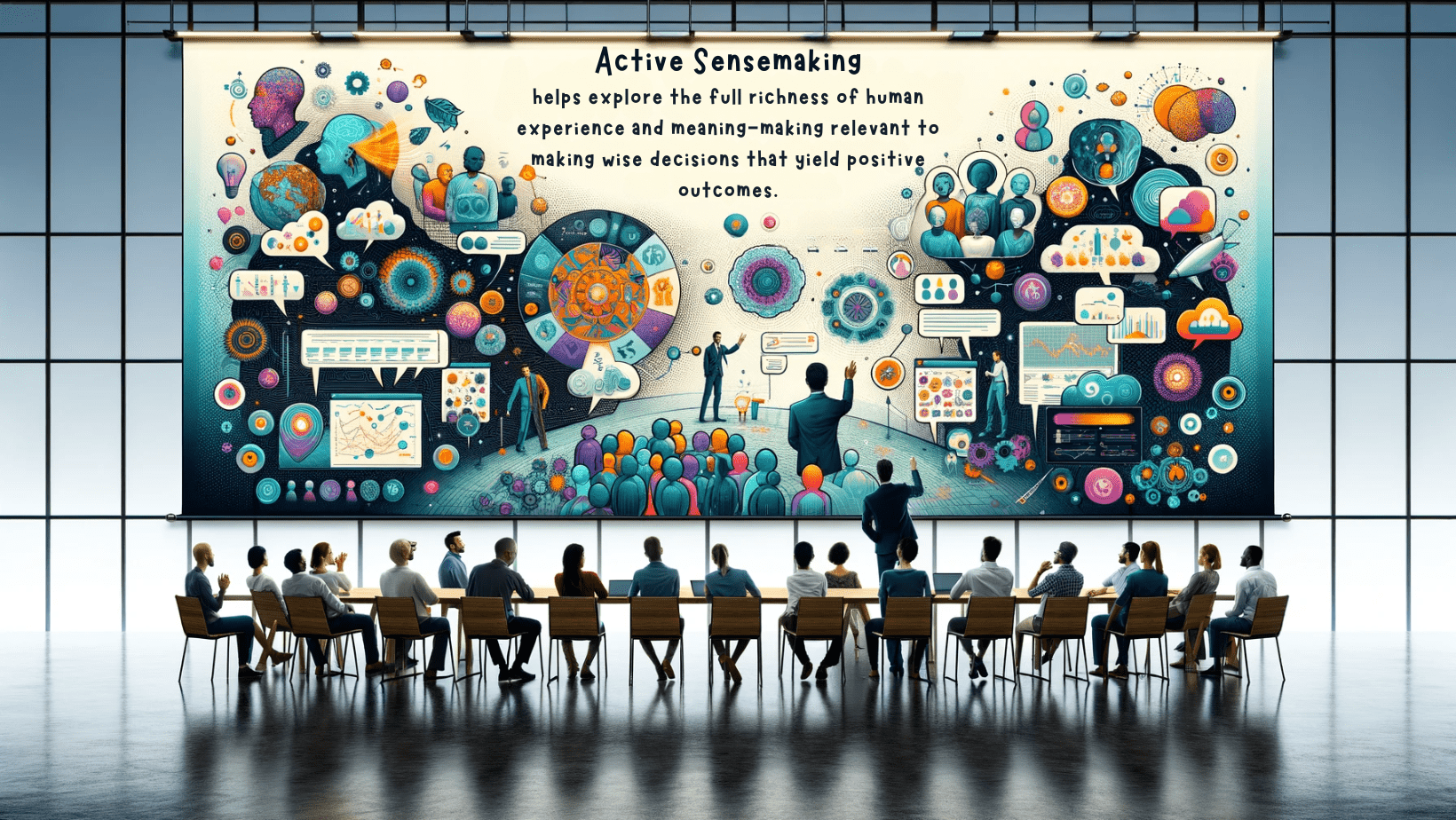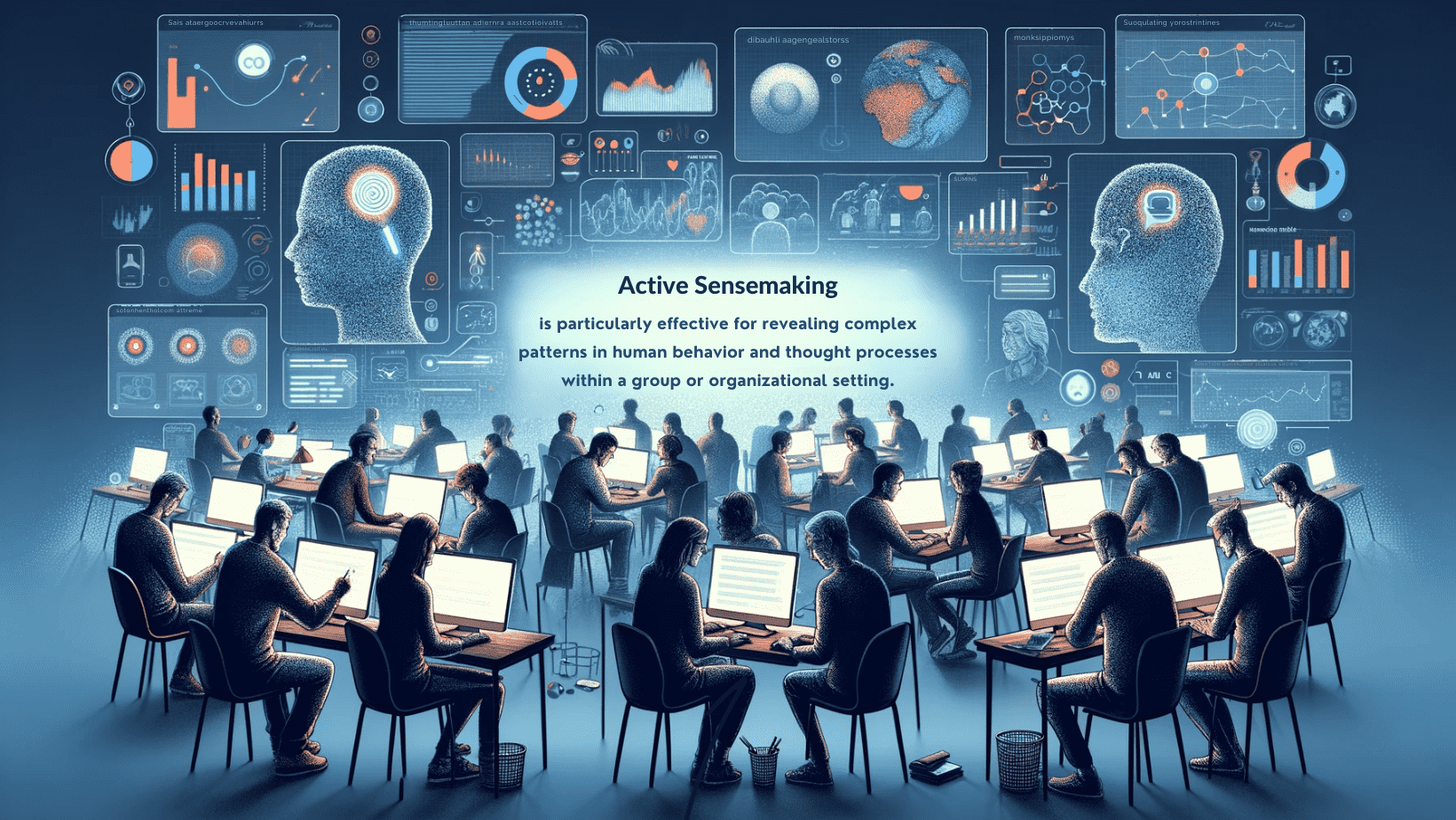Leadership and Active Sensemaking
by Barrett Horne

Introduction
Those of us whose work requires making sense of human enterprises—organizations, communities, teams, groups of all kinds—are confronted with the reality of human complexity. Even at the level of an individual, humans are infinitely complex—a unique stew of experiences, beliefs, histories, education, motivations, hopes and dreams (to name but a few of the ‘ingredients’ in our stew). Combine us into a group or organization and the complexity is infinitely compounded. When one stops to think about it, it is nothing short of amazing that anybody can make sense of anything.

The Challenge
And yet we do make sense of human enterprises. And those of us who are charged with exercising leadership within groups and organizations work hard to do it well, making possible effective and productive group outcomes.
These positive outcomes emerge from leaders paying close attention to the human situation in question—being deeply curious about what is going on, noting patterns, responding with wise actions and then observing outcomes and adapting accordingly.
As humans, we have evolved to be very good at noting and responding to patterns. But it becomes increasingly difficult as the scale of the human enterprise expands in size and/or over time. It is one thing to have insights into a small team—appreciating the unique contributions and concerns of each member. But it is quite another thing to discern what is really shaping a community of dozens—or hundreds or thousands—of individually unique and complex individuals.
Historically, leaders facing these challenges have used surveys and focus groups to try and gain the insights they need for wise decisions as leaders. Surveys provide quantitative data about a population while focus groups can provide rich qualitative data. But the utility of both these methodologies is quite limited. Survey data is necessarily abstracted from the experiences of participants. The unique human context of individual respondents is left behind, leaving leaders to wonder why, e.g., a Likert average is 3.8 out of 10 on a question this year when it was 4.9 on the same question last year.
Focus groups can provide rich qualitative data as participants share their opinions and stories. But they also have significant shortcomings, including small sample size which may or may not be reflective of the larger community, the influence of group dynamics on how people respond, the possibility of participants shaping their contributions to please the facilitator, the influence of the facilitator (through unintentional body language queues, how questions are phrased, etc.), and the challenge of analyzing and interpreting opinions, emotions and nuances that may not be straightforward.

The Methodology
As an alternative to traditional surveys and focus groups, Active Sensemaking offers leaders a powerful methodology that makes it possible to explore the full richness of human experience and meaning-making relevant to making wise decisions that yield positive outcomes. As human beings, we naturally make sense of the world by applying meaning to our experiences. Things happen to us and we interpret those things, typically telling a story that provides meaning to the experience: My neighbour unexpectedly shovels the snow off my driveway and I tell a story of how kind and generous she is. My colleague shows up late for a meeting and I tell a story about how inconsiderate he is. The methodology of Active Sensemaking captures this natural human tendency and makes it possible to apply at scale.

Application
In essence, participants in an Active Sensemaking initiative are invited (anonymously) to share an experience or a story in response to a carefully crafted but simple question that is relevant to the purpose of the inquiry. Then the respondent responds to a further set of interpretive questions by which they indicate their interpretation of the story they just shared. Finally, there are some relevant demographic questions. Unlike traditional surveys, participants are encouraged to share as many experiences as they wish, each time answering the interpretive questions about the story shared.
As the data is collected, the stories and their interpretations remain connected. It is always possible to view how any individual experience was interpreted. And as patterns of interpretation emerge, all of the stories behind those patterns are there to be queried and explored. Moreover, each of the various interpretive questions can be used as filters to explore the correlations and differences between various patterns of interpretation.
The GIF below provides a glimpse of how the quantitative and qualitative data from an Active Sensemaking inquiry can reveal insightful patterns for understanding and for action. Appreciating that a picture is worth a thousand words, clicking on the GIF will allow you to interactively explore the patterns of engagement which are one part of an employee engagement report, revealing something of the power and possibilities of Active Sensemaking.


Conclusion
It is impossible to overstate the potential utility of this methodology. A well designed Active Sensemaking initiative is capable of yielding insights—and at scale—far beyond what is possible with traditional methods of inquiry. The consistent connection between stories and their interpretations can reveal critically important ‘weak signals’ that would otherwise have been missed. Important answers may be revealed to questions that it had not occurred to leaders to ask. Continued over time, an on-going Active Sensemaking initiative can yield early evidence of how leadership decisions are influencing the community under consideration.

Now What?
If you are a leader charged with making wise decisions in challenging and complex human contexts, and if you are genuinely curious about what is going on in the communities you serve, I invite you to learn more about Active Sensemaking as an important part of your leadership toolbox. You can learn about the approach and practice using it on a challenge you are currently facing. Join a team of experts to:
